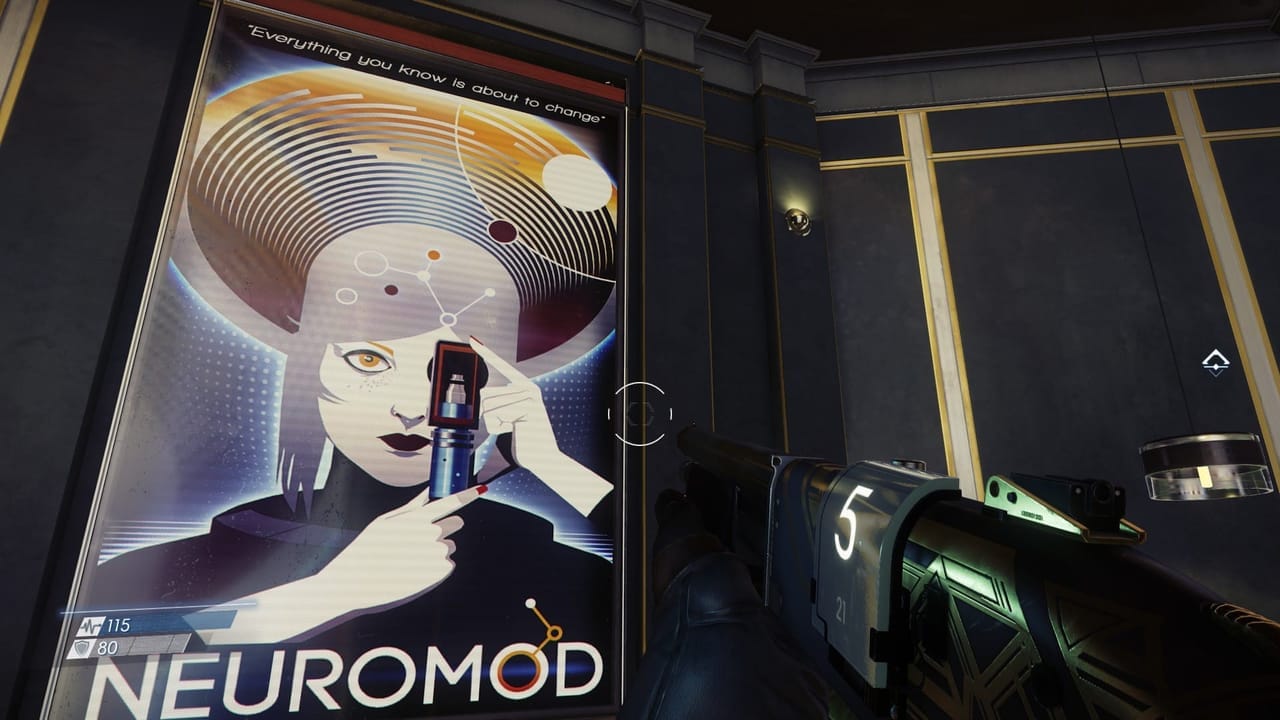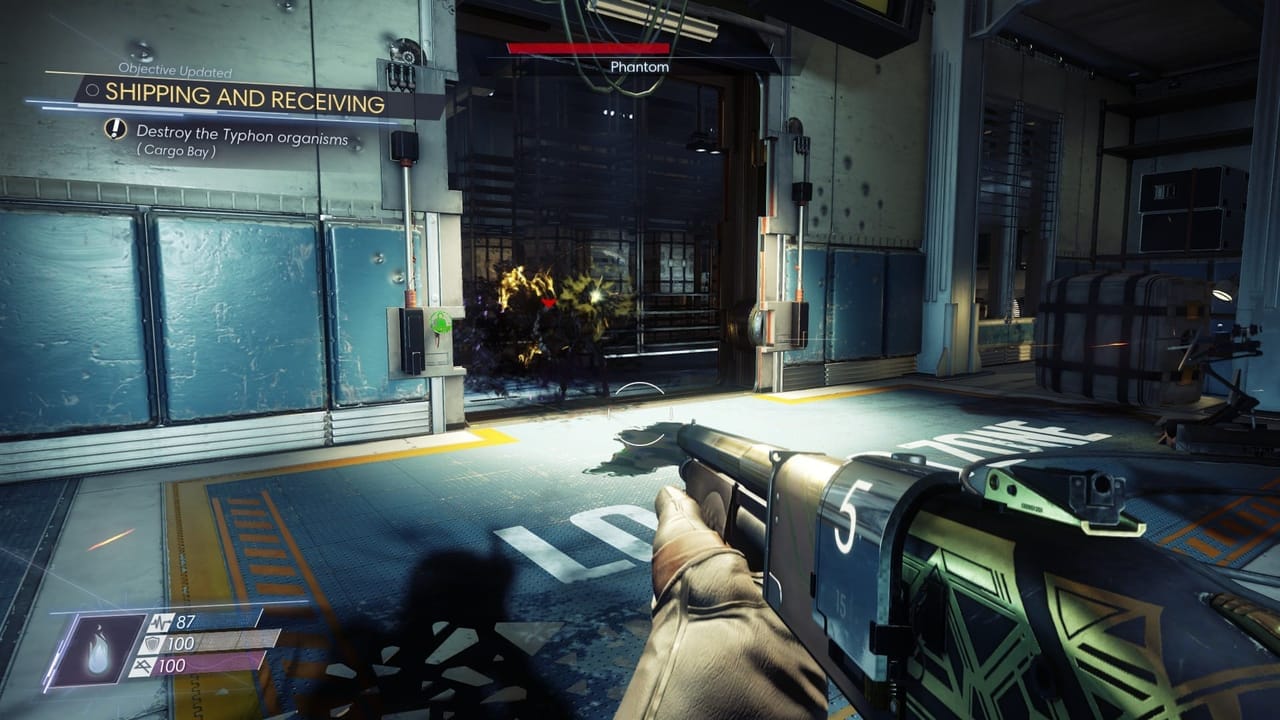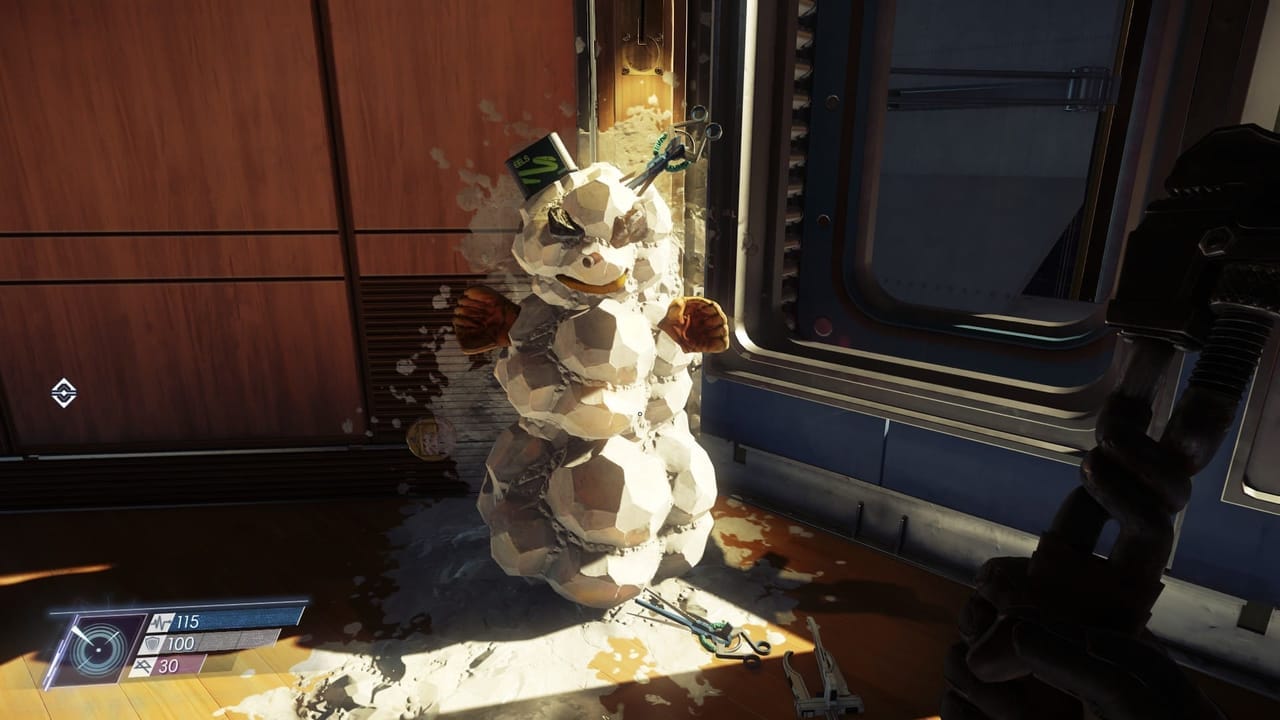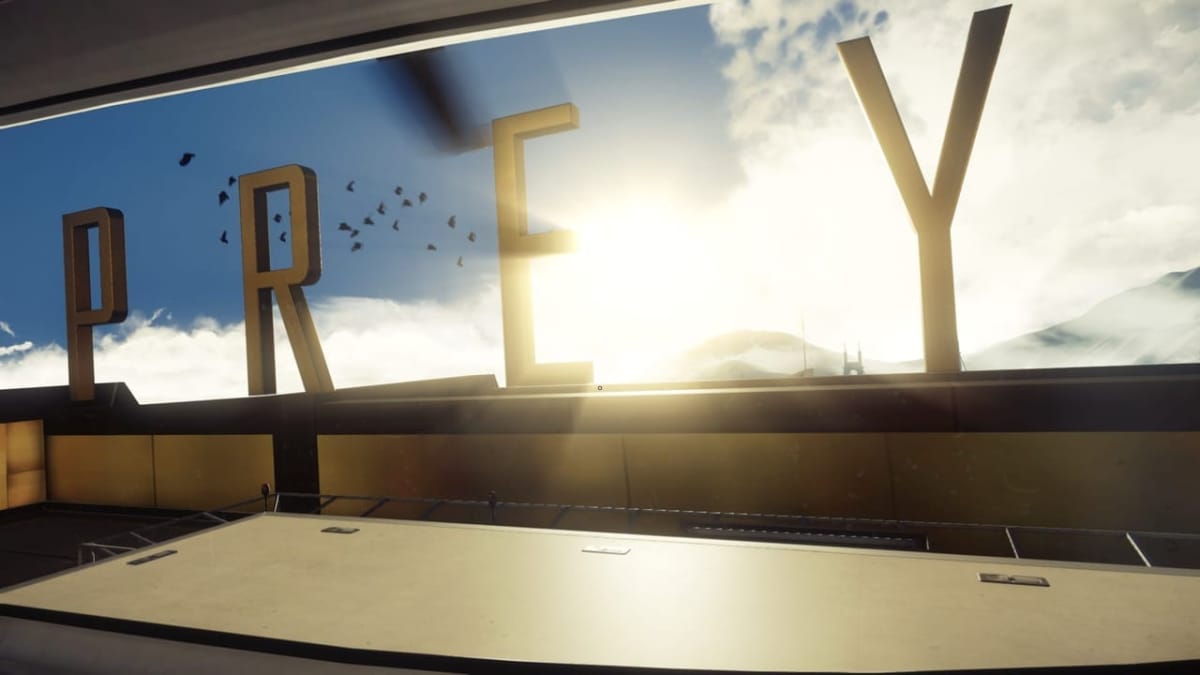I can still remember my first playthrough of Bioshock. Not just what happened in the game, but my own sense of wonder as I looted every nook and cranny of Rapture. It was the first immersive sim that I ever played, long before I had an inkling of what that term meant. I knew that it was special, and Andrew Ryan's perfect city has stuck with me a decade after that first trip under the sea. Due to their complexity, we don't really see many games walk down the same road, but Arkane's Prey wears its inspirations loudly and proudly. After all, Morgan Yu, a mostly silent protagonist with amnesia who obeys voices over a radio, wields a wrench and gains magical powers via painful looking injections. References to past games abound, and it can sometimes be hard to parse out a developer's homage from mechanics that have become standard with this type of game. What is easy to see is that Prey reaches for the stars but still remains in orbit, trapped in the inky shadows of its inspirations.
After a masterfully done opening, Yu finds themself on Talos 1, a space station that is researching alien life. The Typhon are a species of extraterrestrial shadow creatures that can absorb and control other biological life. In an effort to give humans these powers, the aliens were kept and researched on this station, but a single breach in security has led to the entirety of the compound being overrun. Now, Yu must traverse the station, survive the ever-increasing Typhon threat, and decide the fate of all on board. It's a wonderful setup, and I enjoyed learning about the station's background and the alternate history that led to its construction and unique architecture. My first few hours were engrossing as I gained new weapons and abilities at a good clip and learned the ropes of exploring my surroundings. The game starts off very strong but loses momentum just as it should be ramping things up.

Let's talk about Prey's abilities. You have access to Neuromods, which can enhance your character in any number of ways. Initially, you have a set of pretty normal upgrades available. Things like hacking more complicated computers, enhancing your prowess with firearms, and lifting and chucking heavy things around. Eventually, you get the ability to research the Typhon with a fancy scanning visor, and this lets you acquire their abilities as well. Every attack and ability the Typhon throw at you can eventually be acquired, but the game seems to actively discourage you from using these powers. You'd think that a game would want you to enjoy creating geysers of fire or mimicking chairs and turrets, but every character in the story warns you against these powers and that puts you on edge. Considering that you spend most of your time with the main story waiting for a huge Atlas-esque twist to drop, you may be hesitant to spec in this direction.
Even if you're not concerned with story, a Typhon leaning player will have to deal with turrets around the station that start to consider you a threat after just two upgrades in that direction. There's also a giant beast that can kill you in one hit and appears to hunt you down whenever you upgrade those skills. Going beyond that, if you save up your resources and try to purchase a bunch of Neuromods all at once to experiment, the game locks you out and throws a side quest at you before you can buy upgrades again. All these decisions made filling out your powers a chore, and it seems like it would be easy to create an underpowered character that would fail miserably at tackling the second half of the game.
So, if you don't want to have to deal with the consequences of using the magic powers that are dangling in front of you, you'll have to rely on the game's meager arsenal of firearms. Prey offers a pistol and a shotgun, three types of grenades, a laser, a Nerf-like crossbow that doesn't deal damage, a stun gun, and the GLOO Cannon. That last weapon is a futuristic glue gun that can be used to hold enemies in place but is really more of a utility tool to patch up problem areas of the station and create bridges and ladders to hidden areas. The gunplay is fine for what it is, and these weapons serve you well when you have ammunition for them. Alas, Prey is extremely stingy with resources, and engaging in too much combat will leave you fleeing from a horde of respawning foes since you literally have no weapons left other than your trusty wrench. One could say that this style of play fits in with theming of the game considering that it's called Prey and all, and I can see that point of view. However, the way the gameplay was designed made me feel completely limited in what I could do and made me dread having to backtrack through rooms constantly to get to the next story beat just because I didn't have the tools to do anything but cower and sneak around.

Of course, this is when Prey lets you move around the station at your leisure. There are several points in the campaign where you are locked into some new area without any warning, which only adds to the issues with resources. Having to scrounge my way through encounters with new enemies while I possessed only a handful of bullets and no obvious alternate paths led to repeated deaths and frustration. Then, there are the first person platforming sections, which are the same bad idea they always have been outside of Titanfall 2. Your GLOO gun can leave chunks of white glue that can be climbed on, and this was a neat way to hide secrets in rooms and reward exploration. However, when you're forced to use it in a chase sequence with giant floating enemies, the mechanic falls apart. Since you can shoot the chunks anywhere, there's no guarantee that your quick shots will create a path to victory, and you'll have to redo sections over and over while taking unavoidable damage from a mess of projectiles. It doesn't help that this reactor section is also the one place in the game where the performance took a nosedive, so I was leaping awkwardly from foothold to foothold and avoiding balls of electricity all at a stunning 15-20FPS.
Late in my playthrough, I realized that even when I had plentiful ammo ready to go, the game's combat didn't really reward me in any way. For clearing even the biggest enemies, you only occasionally get supplies, and you're usually left with nothing but a mostly useless crafting material. I was much better off just sneaking around, and so I loaded an earlier save and spent some upgrade points on stealth abilities. The game certainly got less frustrating at that point, but it also reminded me of playing SOMA with the mods to pacify the monsters turned on. It was simple to get through most rooms if I just threaded around the Typhon, but it wasn't really rewarding either, and I wondered why every mission in the game was so spread out around the station. The nonlinear layout of the game doesn't do anything but force you to refight enemies and tire of seeing the same shadowy visage over and over again.

At some point, the narrative was the only thing keeping my attention. The opening really does a great job of capturing the imagination, and the cast of characters does fill out somewhat in the second half of the game. However, without getting into spoilers, the real important story bits all come very late in the game a-la Bioshock Infinite, and I personally feel like a lot more could have been done with the premise and setting that Arkane has come up with. There were no Fort Frolics here, and most of the side missions are boring fetch quests for insignificant characters that are only really fleshed out in audio logs. I wasn't really satisfied with my final decisions, although the implications of one of them did relieve some of my frustrations in a twisted way.
I'm generally willing to roll with a game's punches. I played through all of Watch Dogs 2 with stun weapons because my character and the narrative didn't really support straight up murder. If Prey wanted you to focus on stealth, the developers should have given a player a reason for that. Going into an immersive sim, I expect to be able to play the way I want to, and Prey failed in letting me do that. It's a confused game that is stealing elements from what came before without stopping to think about the world it takes place in and the story it's trying to tell. It goes back to the tired well of "Would You Kindly"-style conversations and psyches out players before they can truly explore what the game has to offer. I can certainly see why some people would enjoy sneaking around Talos 1, but I personally couldn't wait to strap into an escape pod and jettison back into deep space.
Prey was reviewed on PC via Steam with a code provided by the publisher. It is also available on Xbox One and PlayStation 4.
Review Summary
Prey has all the atmosphere in the world but feels held down by its need to conform to what came before, its lack of enemy and weapon variety, and its refusal to let players choose their own path.
(Review Policy)Pros
- Talos 1's Design
- Great First Impressions
- Unique Narrative Concepts
Cons
- Clunky Combat
- Forced Stealth and Platforming
- Punishing Resource Management
- Overall Lack of Variety
Have a tip, or want to point out something we missed? Leave a Comment or e-mail us at tips@techraptor.net













